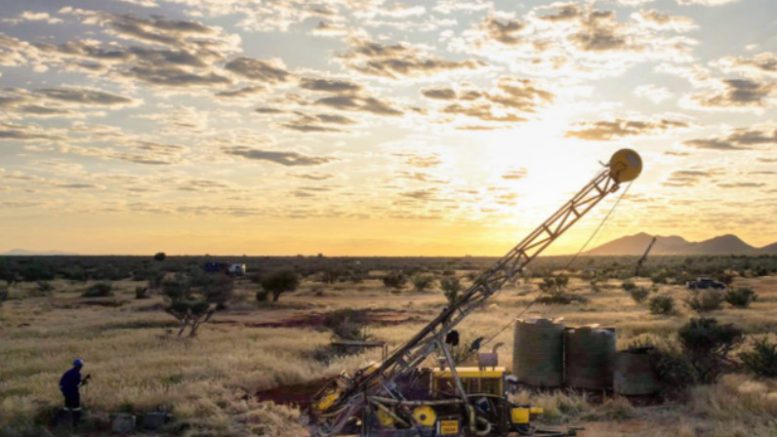Osino Resources (TSXV: OSI; US-OTC: OSIIF) is eyeing first gold production as at its Twin Hills project in Namibia starting in late 2025 or early 2026, based on a positive feasibility study it released today.
The Twin Hills project has a life of 13 years at a rate of 5 million tonnes annually. It will cost US$365 million to build, and at US$1,700 per oz. gold, offers a payback of 2.2 years. Sustaining capital is estimated at $41 million.
At a spot gold price of US$1,750 per oz., Twin Hills has a net present value (5% discount) of US$480 million and an internal rate of return of 28% post tax. At US$1,950 per oz. gold, the after-tax numbers would be US$656 NPV and 36% IRR. Life of mine cash flow would be a respectable US$721 million at the lower gold price or US$958 million at the higher price.
“We are very pleased with the results of this (feasibility study) which confirms Twin Hills as a technically simple, long-life and low-cost gold project with very strong economics and plenty of upside,” said Osino’s president and CEO Heye Daun, in a release.
Daun added the company is starting detailed engineering work right away with the aim of making a “fully financed” construction decision by the end of the year.
The Twin Hills deposit, in Namibia’s Damara orogenic belt, is described as a sedimentary-hosted and structurally controlled lode gold occurrence.
The processing plant will recover 92% of the gold in ore using three-stage crushing, ball milling, gravity separation, pre-oxidation, and a carbon-in-leach (CIL) circuit. Tailings are to be dry-stacked.
With a cut-off grade of 0.45 gram gold per tonne, proven and probable reserves are 64.5 million tonnes grading 1.04 gram gold for 2.2 million oz. Measured and indicated resources stand at 84.3 million tonnes grading 1.08 grams gold per tonne for 2.9 million oz. Inferred resources are estimated at 7 million tonnes grading 1.10 gram gold for 250,000 oz.


Be the first to comment on "Osino’s Twin Hills feasibility outlines 13-year gold mine in Namibia"